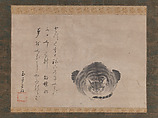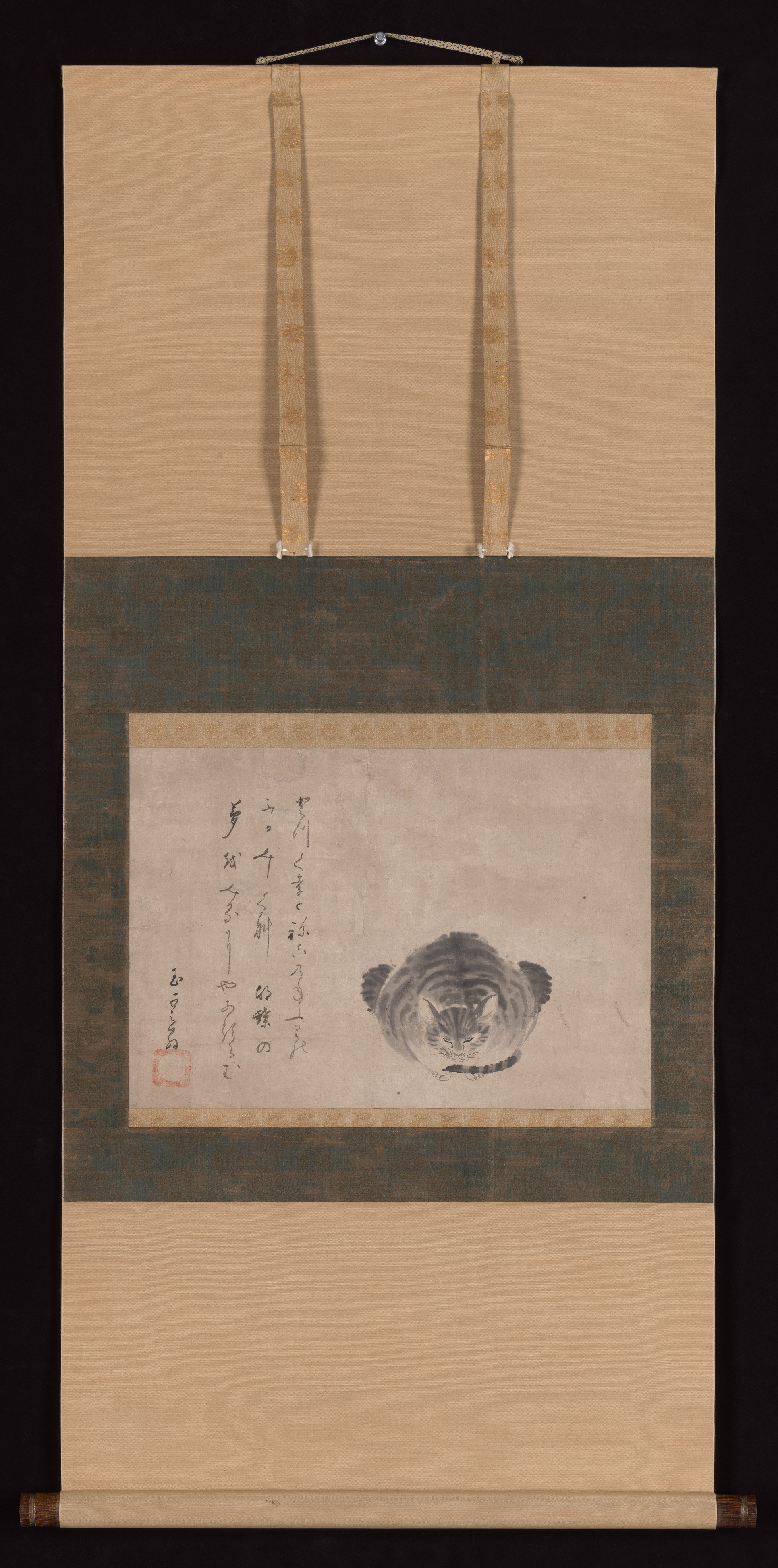Dreaming Cat
Hōzōbō Shinkai Japanese
Not on view
A chubby cat, sensitively rendered in soft brushstrokes of ink in varying tones, is blissfully resting. We see the feline from the front, with its front legs tucked beneath, so that its body forms nearly a perfect circle, with the rear haunches symmetrically protruding from each side. The background is completely blank, with the exception of the three columns of gracefully brushed calligraphy of the artist’s own poem, accompanied by the artist’s signature and anchored by a square red seal. The overall effect is one of serenity, yet at the same time humor and playfulness.
The artist’s own witty poem—a kyōka (literally, “madcap verse”)—makes us reinterpret the image:
とっくりとねこのねむりのふかみぐさ
胡蝶の夢をみるにやあるらむ
Tokkuri to
neko no nemuri no
fukami-gusa
kochō no yume o
miru ni aruramu
Deep asleep the cat lies
as if amid “deep grasses”
of peony blossoms,
perhaps having a dream
in which he is a butterfly!
—Trans. John T. Carpenter
The poem alludes to the famous episode of “Zhuang Zhou dreaming he is a butterfly” from the second chapter (Of the Equality of Things) of the Daoist classic Zhuangzi. Instead of portraying the philosopher Zhuang Zhou (the proper name of Zhuangzi) slumped over in sleep, as sometimes depicted by Japanese artists, the artist Shinkai has depicted a rotund cat fast asleep. The kyōka poem includes wordplay by making fukami-gusa a pivot word (kakekotoba) first read as part of the phrase nemuri no fukami (fast asleep) and then read as the poetic term fukami-gusa (deep grasses), which is an alternative name for peonies. Cleverly, through verbal allusion, the painter-poet conjures up a picture of peonies and butterflies—a favorite theme of East Asian painting.
The artist Hōzōbō Shinkai was a Buddhist monk active in the early Edo period, whose name derives from the type of “monk’s dwelling” (hōzōbō) in certain Kyoto Shingon temples affiliated with the Otokoyama Hachiman Shrine. He studied tea ceremony under Kobori Enshū and is said to have studied calligraphy under the tutelage of Shōkadō Shōjō, one of the top calligraphy masters of the era when Shinkai was growing up. He studied haikai poetry with Matsunaga Teitoku, who inspired him to create of playful forms of kyōka, as represented by the poem here.
This image cannot be enlarged, viewed at full screen, or downloaded.
This artwork is meant to be viewed from right to left. Scroll left to view more.



